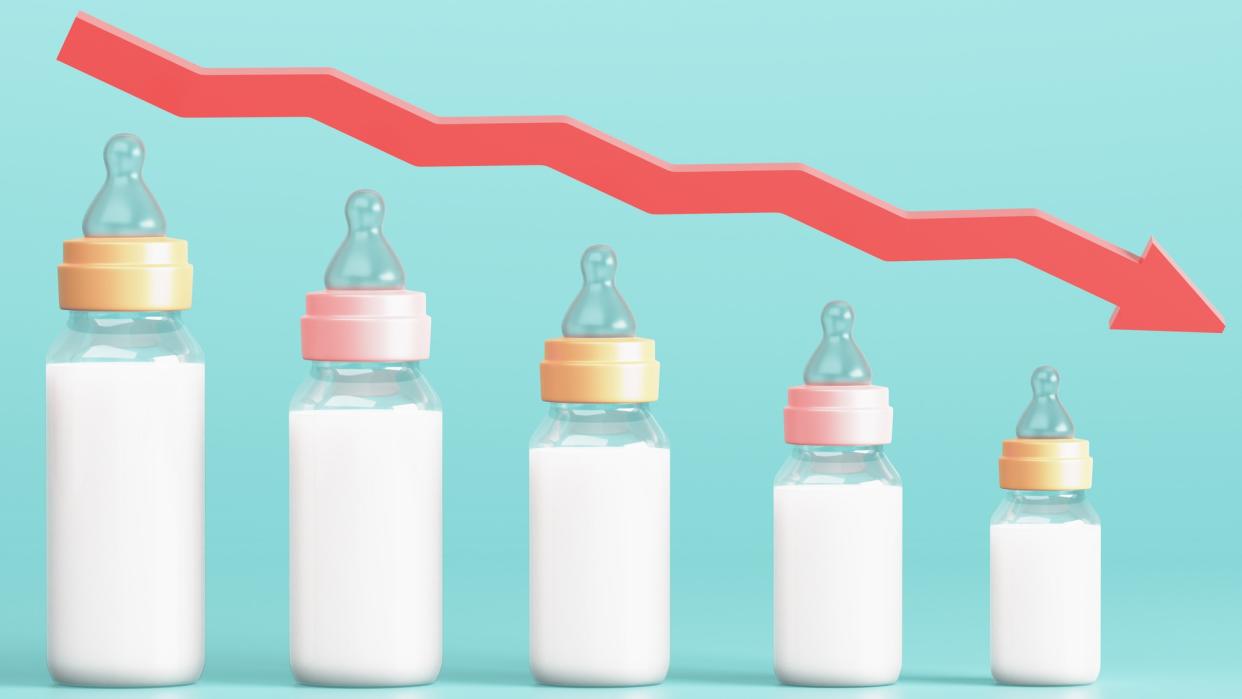Why does the US fertility rate keep dropping?

The U.S. fertility rate dropped to a record low in 2023. Birth rates have been declining for the last few decades, and Americans are currently not having enough children to replace the country's population. Much of the birth-rate decline can be attributed to ongoing social and economic issues leading women to have fewer children later in life.
How did US fertility rates change in 2023?
Provisional data for 2023 by the Centers for Disease Control and Prevention (CDC) found that the total fertility rate in the U.S. dropped to its lowest since birth rate data began being tracked in 1979, decreasing by 2% in 2023 compared to 2022. This also marked the end of the pandemic baby boom. "A confluence of factors are at play. American women are having fewer children, later in life," said The Wall Street Journal. "Women are establishing fulfilling careers and have more access to contraception."
Teen birth rates reached a record low, while birth rates among older women decreased at smaller rates than those of younger women. The highest birth-rate levels were seen among women between 30 and 34 years old. "One factor, of course, is the option to wait. We had a pandemic, or there's an economic downturn, let's say — women in their 20s can postpone having a birth until things improve. … For older women, the option of waiting is not as viable." Women of color saw more of a decline than their white counterparts. The fertility rate declined 5% for Black women and American Indian and Alaska Native women, and 3% for Asian women.
"People are making rather reasoned decisions about whether or not to have a child," Karen Benjamin Guzzo, the director of the Carolina Population Center at the University of North Carolina at Chapel Hill, said to the Journal. "More often than not, I think what they're deciding is 'Yes, I'd like to have children, but not yet.'" On a larger scale, the U.S. population is expected to begin declining in 2080, according to the Census Bureau. The repercussions are still unknown but could affect programs like Social Security. This shift "has the ability to have a significant impact on the way we live for a long time to come," Phillip Levine, an economics professor at Wellesley College, said to the Journal.
Why are US fertility rates dropping?
The dropping fertility rate is a reflection of current social and economic issues. "For the first time in our nation's history, a 30-year-old man or woman isn't doing as well as his or her parents were at 30. That is the social compact breaking down," Scott Galloway, a professor at New York University's Stern School of Business, said in an interview with Fortune. In addition, "Millennials and Gen Zers face sky-high mortgage rates, soaring home prices and inflation, and it's slowing some traditional, or otherwise historic, milestones like having a child," Fortune said.
Women across the country are also experiencing a "growing concern over access to reproductive healthcare and politicized debate over abortion access, as well as concerns over the economy, a lack of rights for working parents and growing fears over the future of the planet," said Forbes. For these reasons, many are opting to remain childless. "While countries including France and China have taken measures to try to encourage couples to have children, U.S. birth rates have been stifled by forces like lack of paid family leave and skyrocketing health costs," Time said.
The U.S. is not the only country facing population issues. A study published in The Lancet found that 198 out of 204 countries are likely to see a population decline by the year 2100. "The implications are immense," Natalia V Bhattacharjee, co-lead author of the study, said to Al Jazeera. "These future trends in fertility rates and live births will completely reconfigure the global economy and the international balance of power and will necessitate reorganizing societies."


